
Attraction Balangoda - Balangoda
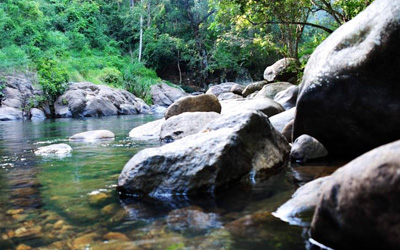
Belihuloya
Belihuloya, a very picturesque little hamlet renowned for its Eco, Adventure tourism opportunities, is situated in the “Sabaragamuwa” province of Sri Lanka, approximately 160 km from Colombo. This beautiful hillside location is a climatically transitional area, linking both the dry and wet zones and the hill and low country at an altitude of less than 1500m. As a result, the vegetation consists of moist semi-evergreen forests, tropical savanna forests, dry patana grasslands and montane temperate forests, making it one of the richest bio-diversity spots in Sri Lanka – a perfect location for nature lovers.
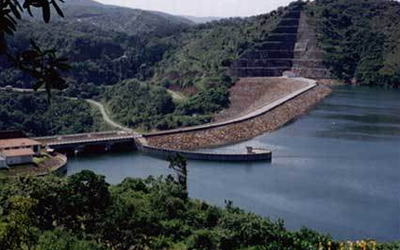
Samanalawewa Lake & Dam
The Samanalawewa reservoir, formed by a 100m high embankment dam, is one of the largest reservoirs in Sri Lanka built in the recent times. It is located 160km south east of the capitol, Colombo, and is the key element of the 120-million-watt Samanalawewa Hydroelectric Project.
It is constructed on one of the main rivers in Sri Lanka, the Walawe River. Geologically the project is in an area of karst within the Highland series of the Sri Lankan Precambrian complex comprised of crystalline metamorphic rocks. The area has been subjected to extensive folding, faulting and hydrothermal reactions. Thus, the project area is geologically complex. On several occasions a number of agencies have studied the project site, conducting various detailed geological, hydrogeological and geophysical investigations.
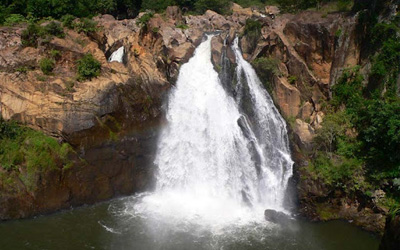
Duviliella Waterfall
The 40 m high eastward set waterfall of the Walawe of the Wallace Gang within the thick jungle of the monsoon forests is to be visited from Kaltota [28 km off Balangoda]. There is a narrow walking path up and down through scrub and over boulders traversing the steep slope of the valley. Upstream along the river [2km]. You make your way in single file. Slowly and tediously, for a false step would mean certain death. The path is on the edge of precipice where the stream rushes through a series of big rock boulders. You will arrive on a hill opposite the fall, where the water flows over a broad rock-step coming from a valley at a higher level. The Ganga plunges into a deep pool and turns right-angled eastward to Kaltota, where the river enters the maritime plain, again turning to the south. Sometimes wild elephants prowl in this area. The name of the fall derives from Sinhalese duvili=dust
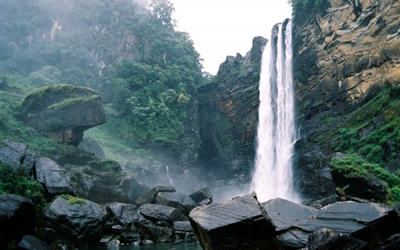
Bambarakanda Falls
Within a majestic basin-shaped valley bordered by huge steep rocks and dark green forests of pines and tropic trees the highest waterfall of Sri Lanka (263 m) plunges with two silver ropes over a vertical dark grey wall from the green saddle between Mt.Welihena (1375 m NN) and Mt.Babaragala (1470 m NN) in to a deep pool only 150 m walking distance from a small motorable road off A-4 at Kalupahana-Ganwasangoda to Quitota (3 km). The lower part of this road is bordered by farmhouse under Jak trees, palm trees and other useful plantation. The road climbs up a narrow valley which opens suddenly after bend to the beautiful scenery around the waterfall (1000 m NN).the pool is surrounding by paddy fields. You’ll park the car opposite to the fall by a small well (Sinhalese called ‘pilila’) under an Oleander bush.
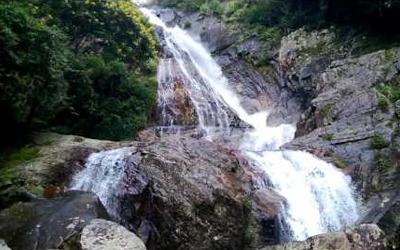
Surathali Waterfall
Surathali fall is 60m in height, 2m wide and made up of three segments. It is named after a film that was shot in the area. Originating from the Sri Pada Reserve's Ellamana mountain range (948m), the fall is created by the Kadawath ganga, which flows along Sabaragamuwa, Uva and later into the Weli ganga. It is bordered by an untouched wildlife sanctuary.

Budugala
Kalthota junction can be approached by wending 30 km from Balangoda town. Thereafter, by travelling about 45 km along Diyavinna road that traces to south direction Budugala Rajamaha Vihara, which has a significant historical value and the archaeological main-house land, can be sighted in a short distance. This sacred land is located in Budugala archaic village alias Budugale Katuwa that lies adjacent to Mahawalathenna plateau. This ancient Buddhist sanctuary, which is considered to be erected in Anuradhapura era, has been under the regional governance of Kalathiththa (Kalthota Kingdom) that was situated at the terminal border of Rohana domain in days of yore. There is an archaeology complex at the right side of the sanctuary. It is mentioned in recorded history that a prince called by the name Vikum Pandi alias Vikrama Pandya arrived Sri Lanka in 1042-1043 A.D. and kinged Kalathiththa (Kalthota) for one year. The terrain is rich with a mass of ruins of his court. Inscriptions can also be sighted in these caverns. Archaeologists, who have weighed the letters and language pattern of the inscriptions in caves remaining, mention that these inscriptions belong to 2nd century B.C. It seems that afterwards in an era of inimical calamity (might be in the reign of King Walagamba) sacred tooth relic was hidden in Budugala and was safeguarded. Evidence that is usually visible in places, where sacred tooth relic was enshrined every now and then is also reflected here.
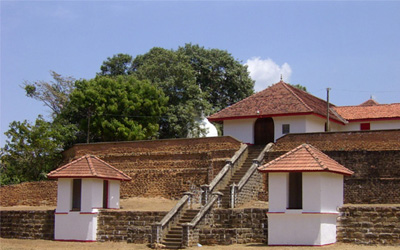
Uggal Aluthnuwara Katharagama Devale
Uggal Aluthnuwara Katharagama devale, which is located in Imbulpe Regional Secretarial Division in Rathnapura-Badulla route, seems to be inaugurated around 1303 A.D. Piled up vihara-house, which is now bereaved to ruins, tope (dagaba), Bo-tree, shrine of Kandasurindu and related kitchens, refectories and store-rooms have been erected in a winsome land of 10 acres. It is mentioned that this devale has been erected by a king called “Soorya”. After him King Yapa has reconstructed this place. King Seethawaka Rajasinha also contributed to ameliorate this place of worship. Portuguese have once invaded this area but no harm has happened to devale. The oldest jack tree in Sri Lanka is also situated in the yard of this sacred place. The annual procession held by Uggal Aluthnuwara Katharagama devale is second only to the procession of Sabaragamuwa Maha Saman Devale. According to documents in this place of worship, which is allied to Ammaduwa Katharagama devale, a large collection of lands and fields belong to Uggal Aluthnuwara devale. But today most of the lands have been seized by people around leaving no income from glebes. All the rituals done in procession of Ammadu devale are equally done in Aluthnuwara devale with nothing less.
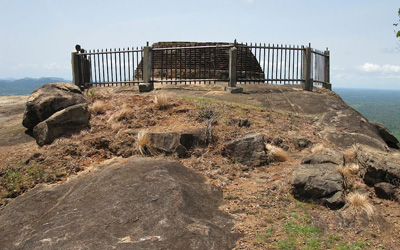
Kuragala
Kuragala monastery complex can be sighted in a 1¼ mile distance from 14th mile post in Balangoda-Uggal Kalthota route. This is a Buddhist traditional heredity, which has seen the light and developed synchronous to archaic monasteries like Vessagiriya, Ritigala, Dimbulagala, Sithulpavuwa and Mihinthalaya. Among the few caverns, which are famous in relation to their religious, national, cultural and historical value, this cavern holds an inimitable place second to none. According to folklore the old name of this massive rock is “Kuharagala”, not “Kuragala”. Though this place is called Kuragala in common, actually there are two rock-apical namely Kuragala and Hituwangala, which is named by dint of its natural site with a natural concavity in east slope of the rock. This rock concavity is 15-20 ft. deep and large enough for two people to go in at once. Before reaching Kuragala one has to climb the old stair case made picking the rock and in a 100 yard distance there is an annular cant. Thence from left the cave complex, in which antecedent Brahmi letters inscribed, is accessible.
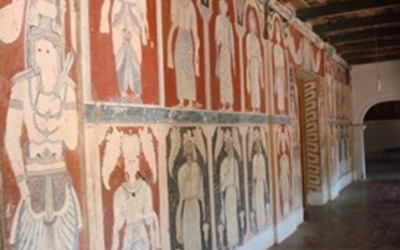
Kottimbulwela Rajamaha Vihara
This massive place of worship adjacent to Sripadha that is famous as “Kottimbulvala Walagamba Rajamaha Vihara” is situated in Veligepola Regional Secretarial Division belonging to Rathnapura Electoral Division. Vicinity of this cave temple is bucolic and richly beautified with rolling hills and paddy fields. A bock of a large land of 12700 acres belongs to this temple under which about 18 sub-temples have been in governance. A story of a tunnel ran from Kottimbulvala Rajamaha Vihara, which has been erected by king Walagamba, comes in vogue. Kottimbulvala is also considered as one of the biggest cave temples in Sri Lanka. When king Walagamba was here, a troop was gathered at Ranagumpola (Kottimbulvala) with assistance of Buddhist incumbents presented in the temple at that time, and took them to Hambegamuwa area and gathered another troop with the help of theros lived at Kota Vehera. Then they headed to northern Sri Lanka. With succor of another troop also that they collected on their odyssey, Anuradhapura was vanquished. King has offered Kottimbulvala incumbent thero, who helped him first, a honorific epithets; “Abhaya Raja” and insist a strong man to climb the rock and play a bronze double drum and granted vihara complex and temple land that would measure the entire area covered by the sound of double drum, to Kottimbulvala incumbent thero to use until the terminus of Buddhist order.
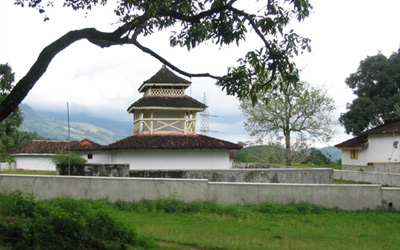
Bolthumbe Sumana Saman Devale
This historical terrain is located in Bolthumbe village that is in a distance of 9 miles from Balangoda-Pinnawala route, which belong to Imbulpe Regional Secretarial Division. The winsome location that inherits a legacy of 500 years is situated at the feet of Dethanagala Mountain stands in a plateau in Mahawalathenna mesa. This devale, which is inaugurated as Bolthumbe Saman Devale by King Rajasinha I, is considered as one of four devales erected in four directions encompassing Saman Devale at Sripadha. There is a viewpoint that this devale was erected with the intention of protecting antiques and God’s ornaments belonging to Rathnapura Maha Saman Devale from the incursions of Portuguese. After visiting this temple dedicated to Saman deity on 10th February, 1886 Mr. H. Wase has noted the description below. “The entrance to the long hall of devale is magnificent and attractive. Surface line of the door-post made of ebony has been battened with chiseled ivory belts. Outwardly thin brass cleats have been fixed in every direction.” A report written by Mr. W. H. Kodrinton on 8th January, 1922 documents, that devale was not in a good condition at that time and there was a deep wooden chest that would measure 4 ft. long and 2½ wide. He evaluates the bronze chariot of deity as the most precious entity in the entire terrain. An annual Esala procession has been held relating this place of God. In present Mr. Migara Jayasundara campaigns as the lay-incumbent of Bolthumbe Saman devale.
